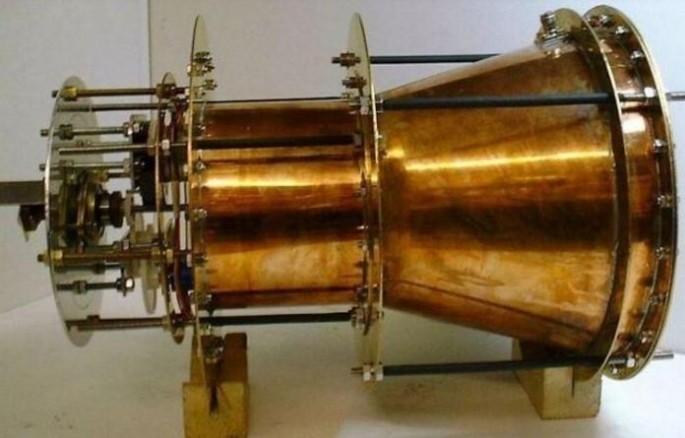NASA has proven that Robert Shawyer's controversial EmDrive engine does indeed work and a copy of the peer-reviewed scientific paper proving this has been leaked on the internet.
The scientific paper, which will be published in the magazine, AIAA Journal of Propulsion and Power of the American Institute of Aeronautics and Astronautics this December, indicates NASA succeeded in replicating Shawyer's work conducted in 2006 and also proved the EmDrive (for electromagnetic drive) does in fact obey accepted laws of physics.
The paper was written by scientists from the Advanced Propulsion Physics Laboratory at NASA's Johnson Space Center, also known as "Eagleworks." Entitled "Measurement of Impulsive Thrust from a Closed Radio Frequency Cavity in Vacuum," the paper suggests EmDrive technology works and has a scientific basis.
In their paper, researchers from Eagleworks said that by using light waves and microwave photon propulsion, they were able to produce 3.33 to 6.67 micronewtons per kilowatt in thrust, which is two orders of magnitude lower than Shawyer's 2006 results.
Researchers achieved a force of 1.2 millinewtons per kilowatt in a vacuum after errors of measurement were accounted for.
Also called a radio frequency (RF) resonant cavity thruster, an EmDrive or Em Drive is an electromagnetic thruster that uses no reaction mass and emits no directional radiation. British aerospace engineer Roger Shawyer designed the EmDrive in 2001 and has promoted the idea through his company, Satellite Propulsion Research.
The paper is the first about this propulsion system that requires no propellant to generate thrust, and defies all the accepted laws of physics, especially the law of conservation of momentum.
This law states the momentum of a system is constant if there are no external forces acting on the system. Basically this means an object won't move unless an outside force is applied to it.
Because it provides thrust without consuming a propellant such as bulky rocket fuel or dangerous nuclear fuels, the EmDrive is being billed as the ideal power plant for spacecraft venturing out to other planets in our solar system and beyond.
The EmDrive might also make flying cars possible and might finally solve the world's energy crisis, said Shawyer.
That the paper passed rigorous academic scrutiny is said to have been confirmed by independent scientist Dr. José Rodal on NASA's Spaceflight forum.



























